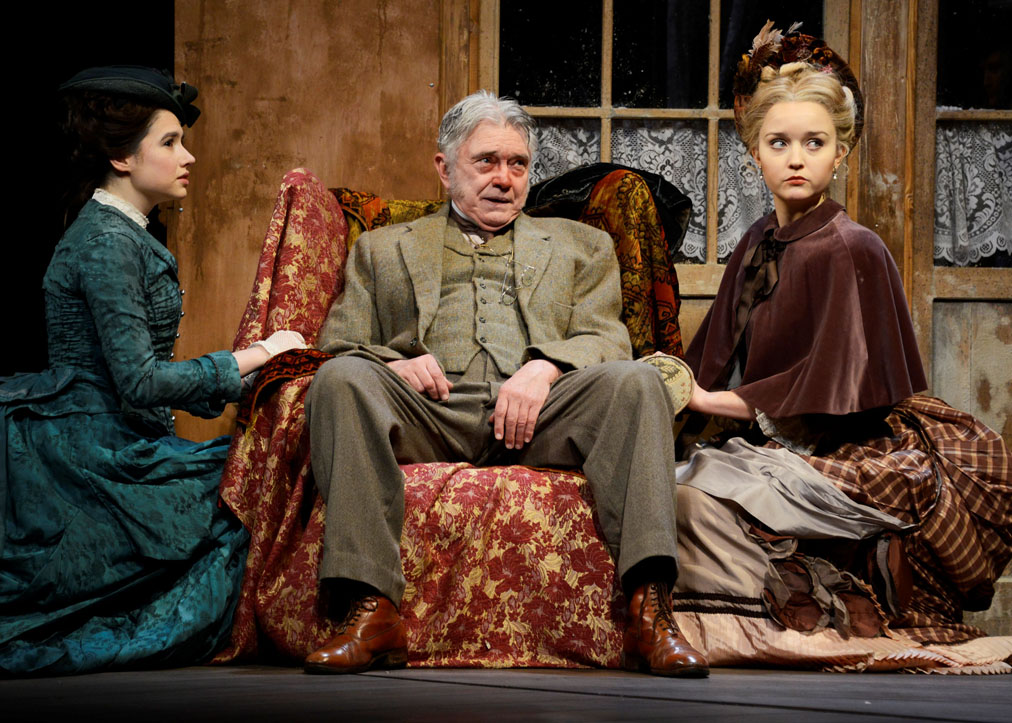
Ever since Menander’s Dyskolos the theme of thwarted youth has formed a staple of comic plotting and Harold Brighouse’s 1915 play sits easily in the tradition. A cantankerous old toper, Hobson, who revels in a tight grip on his purse, his business and his daughters, is ultimately bested by the will, intelligence and business acumen of his eldest, Maggie. Despite the central role of the eponymous Hobson, a Salford shoemaker, it is Maggie who is the driving force behind the action of the play. Determined not to be left on the shelf she sets about arranging her marriage to Hobson’s talented, but unambitious cordwainer, Willie Mossop, whose skill had been noticed by local worthy, Mrs Hepworth. Whilst clearly unpromising marriage material, Willie’s potential as her salvation is quickly spotted by Maggie who sets about knocking him into shape whilst at the same time arranging the future happiness of her two younger sisters.
Having drunk himself to within a few pints of the grave, Hobson is told by his straight talking doctor that his only salvation lies in the hands of a strong-willed woman, and in a scene reminiscent of Lear’s testing of his daughters, he ultimately agrees to Maggie’s terms which include a partnership with her, by now, successful husband – who has been set up in business by Mrs Hepworth.
Director, Jonathan Church, makes no bones about giving us both barrels of Maggie’s political and social significance. Hobson is shown as fighting a somewhat flaccid rearguard action against (to us at least) indefensible social attitudes. It’s a clever dance around tired nostrums, delivered with bluff, ingrained conviction by Martin Shaw, the clash of characters and modern sensibility. In a final twist, which I have yet to make my mind up about, Hobson is led out by a quietly triumphant Maggie, with what is almost a submissive whimper, reminding us of Willy’s early impression of a doormat.
Naomi Frederick’s Maggie is a Pre-Raphaelite with a spine of high tensile steel, who knows her place, but knows equally where it ought to be. The subtlety of her changing relationship with her husband, becoming subordinate – yet not – is a piece of high definition acting. Equally, Bryan Dick’s Willy Mossop, travels a well-measured journey from hapless troglodyte to man of substance.
Simon Higlett’s set has all the feel of a working environment and boasts a very pleasing revolve which takes us from Willy’s basement premises to the front of Hobson’s shop, through the showroom to the living quarters. The Theatre Royal, as producer, is clearly pinning a lot on what must be a relatively expensive revival. However the play is far from being a period piece in that it reminds us how far we have come, and by the same token, how far is yet to go. With a cast at the top of their game audiences will find this piece of classic comedy voices concerns that are yet to be resolved. ★★★★☆ Graham Wyles 2nd March 2016
Photo by Nobby Clark

